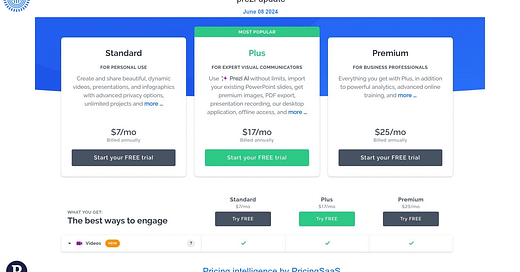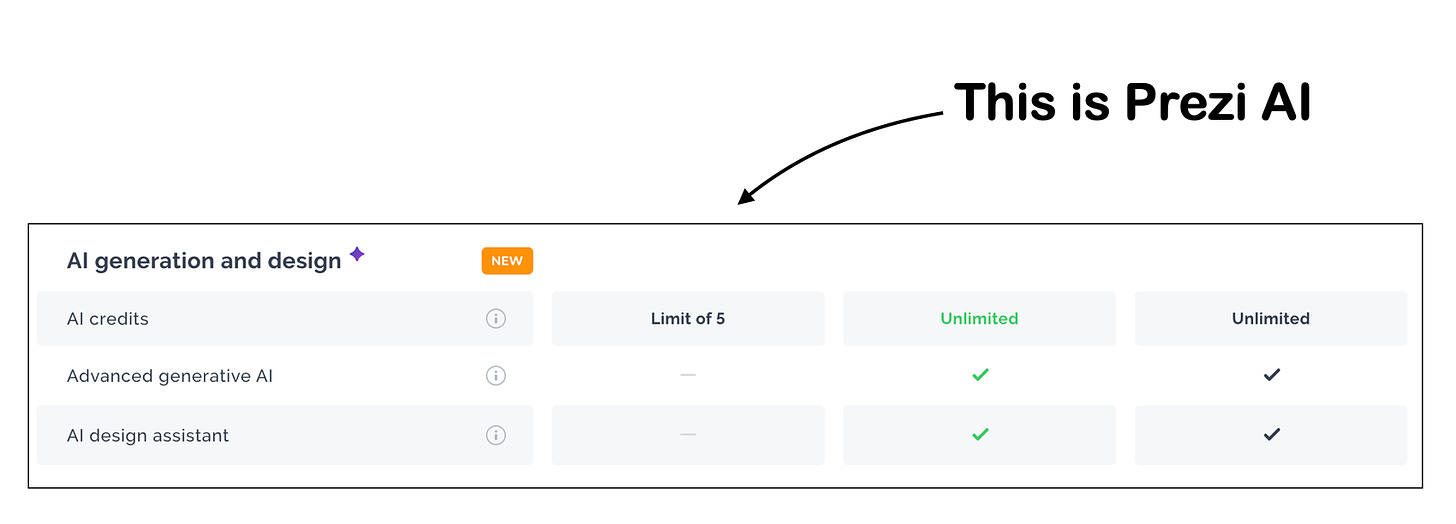Welcome back to the 100th issue of Good Better Best!
This newsletter started in 2020 with the goal of helping SaaS operators get better at pricing by learning from examples. Now, with the help of PricingSaaS, I feel better than ever about delivering on that promise. Thank you all for your continued support!
On to this week’s post, where we’re breaking down an
Today’s post is brought to you by Schematic. Schematic is a set of drop-in components that sit on top of Stripe for complete plan management & purchasing experience.
They’ve put together a free guide to mastering Willingness to Pay conversations & are hosting a free webinar on the subject Thursday October 3rd, at 11am EST.
Whether you're a SaaS founder, product manager, or growth leader, this guide is designed to give you:
✅ A pricing & packaging framework that puts you ahead of 95% of founders
✅ Actionable templates and questions to guide pricing & packaging discovery
✅ Practical tools to confidently determine your market’s willingness to pay
🚨 SaaS Product and Pricing News
Coda removed one app from its Packs add-ons, reducing the value by $10.
SignEasy added new features and lowered the price of its Business Plus plan.
Otter added a video replay feature for Enterprise customers.
Apollo reshuffled features, boosting value for users across the board.
Restream teased a slew of new features.
How to Strike a Balance with AI Positioning
AI is the hottest topic in SaaS.
It’s everywhere, and isn’t going away any time soon.
The question we hear most frequently, is how far to go with AI.
Do you create an AI add-on to test the market?
Do you rebrand your entire product?
Do you land somewhere in the middle?
In our AI Guide, we revealed the 3 core ways we’re seeing companies price AI:
Add-Ons
New Products
Existing Tiers
Each option suggests a different way of positioning AI alongside your product:
Add-On: AI is its own product that sits on top of the existing product.
New Product: AI is its own product, independent of the existing product.
Existing Tiers: AI features are woven into the existing product.
But another approach is a combination of two:
Make AI a product theme, and weave it into your packaging.
To use a concrete example, Prezi recently did this. They created an AI add-on called Prezi AI, then integrated it into existing tiers:
What’s great about this is that they aren’t completely rebranding as an AI product, but using AI as a product theme: More Prezi AI = More Value = Higher Prices.
Why This Works
Rather than having independent AI features scattered throughout its plans, Prezi bundled three features together and called it Prezi AI, then used it to differentiate existing plans.
Notion uses a similar approach, though they let you toggle Notion AI on or off.
The key here is aligning product, packaging, and price:
Product: AI is a core product theme, and available in all plans.
Packaging: Higher tiers get more AI credits.
Price: Access to AI is worth more.
The result is a clear story about how Prezi is investing in AI:
They aren’t completely rebranding as an AI product, but they also aren’t just sprinkling a few AI features across their plans. By making AI a product theme, and differentiating it thoughtfully across plans, they strike a balance, landing somewhere in the middle.
Thanks for tuning in and see you next week!
Good Better Best reaches 6,000 SaaS leaders, operators, and investors every week. Reply to this email if you want to reach our audience.






